Garden Decor: DIY Outdoor Hanging Plants Ideas
Are you ready to transform your outdoor space into a lush paradise? DIY outdoor hanging plants are not just a trend; they’re a way to breathe life into your garden while showcasing your creativity. Imagine stepping into your garden and being greeted by vibrant, cascading greenery that dances in the breeze. Hanging plants can elevate your garden aesthetics, adding depth and dimension that ground-level plants simply can’t achieve. Plus, they’re a fantastic way to utilize vertical space, making your garden feel larger and more inviting.
When you think about it, hanging plants are like the jewelry of your garden—adding that perfect finishing touch. Whether you’re looking to create a cozy nook on your balcony or make a statement in your backyard, the possibilities are endless. With just a few materials and a sprinkle of imagination, you can create stunning displays that not only enhance your outdoor decor but also provide a home for your favorite plants. So, let’s dive into some inspiring ideas that will help you get started on your own hanging plant journey!
Before you jump into hanging planters, it’s essential to select the right plants for your space. Think about factors like sunlight, climate, and maintenance. Some plants thrive in direct sunlight, while others prefer a bit of shade. If you live in a warmer climate, consider plants that can withstand the heat, such as succulents or trailing vines. Conversely, if you’re in a cooler area, opt for hardy plants that can handle the chill.
Additionally, consider the maintenance level you’re comfortable with. If you’re a busy bee, choose low-maintenance plants like pothos or ferns that don’t require constant attention. On the other hand, if you enjoy gardening and want to spend time nurturing your plants, feel free to experiment with more demanding varieties. Here’s a quick overview of some popular hanging plants:
| Plant Name | Sunlight Requirement | Maintenance Level |
|---|---|---|
| Pothos | Low to Medium | Low |
| Spider Plant | Indirect Light | Low |
| String of Pearls | Bright Light | Medium |
| Boston Fern | Indirect Light | High |
Now that you’ve chosen your plants, it’s time to get creative with your planters! You don’t need to break the bank to have beautiful hanging displays. In fact, you can transform ordinary containers into stunning hanging planters that reflect your unique style. Let’s explore some innovative materials and designs that can elevate the look of your garden.
One of the most eco-friendly choices is to utilize recycled materials for your planters. It’s amazing how everyday items can be repurposed into eye-catching displays. Consider using:
- Plastic bottles
- Old cans
- Wooden pallets
- Old furniture pieces
For instance, you can cut plastic bottles in half, paint them in vibrant colors, and hang them to create a vertical garden. Not only does this save money, but it also reduces waste!
Wooden crates can add a rustic charm to your garden. You can easily customize them by painting them or adding stencils. Hang them at different heights to create visual interest. Fill them with trailing plants like ivy or succulents for a stunning effect.
If you’re looking for a touch of bohemian flair, consider making macramé plant hangers. These stylish hangers can be made using simple knotting techniques and are perfect for various plant sizes. Not only do they look fantastic, but they also allow your plants to hang freely, showcasing their beauty from all angles.
Placement is key when it comes to hanging plants. You want to ensure they receive adequate sunlight while also protecting them from harsh weather conditions. Look for spots that get morning sun but are shaded during the hottest part of the day. Consider hanging them near a porch or under a tree where they can benefit from natural shade.
To keep your hanging plants thriving, regular maintenance is essential. Here are some practical tips on watering, fertilizing, and pruning:
Effective watering techniques are crucial for the health of your hanging plants. Make sure to check the soil moisture regularly. A good rule of thumb is to water when the top inch of soil feels dry. Consider using a watering can with a long spout to reach those hard-to-access plants without creating a mess.
Pests can pose a real threat to your hanging plants. To keep them safe, consider natural pest control strategies like introducing beneficial insects or using organic sprays. Regularly inspect your plants for signs of pests and act quickly to prevent infestations.
Q: What are the best plants for hanging planters?
A: Some popular choices include pothos, spider plants, and ferns. Choose plants based on your sunlight and maintenance preferences.
Q: How do I care for my hanging plants?
A: Regular watering, appropriate sunlight, and occasional fertilizing will keep your plants healthy. Don’t forget to check for pests!
Q: Can I use recycled materials for my hanging planters?
A: Absolutely! Recycled materials like plastic bottles and old furniture can be creatively repurposed into beautiful planters.
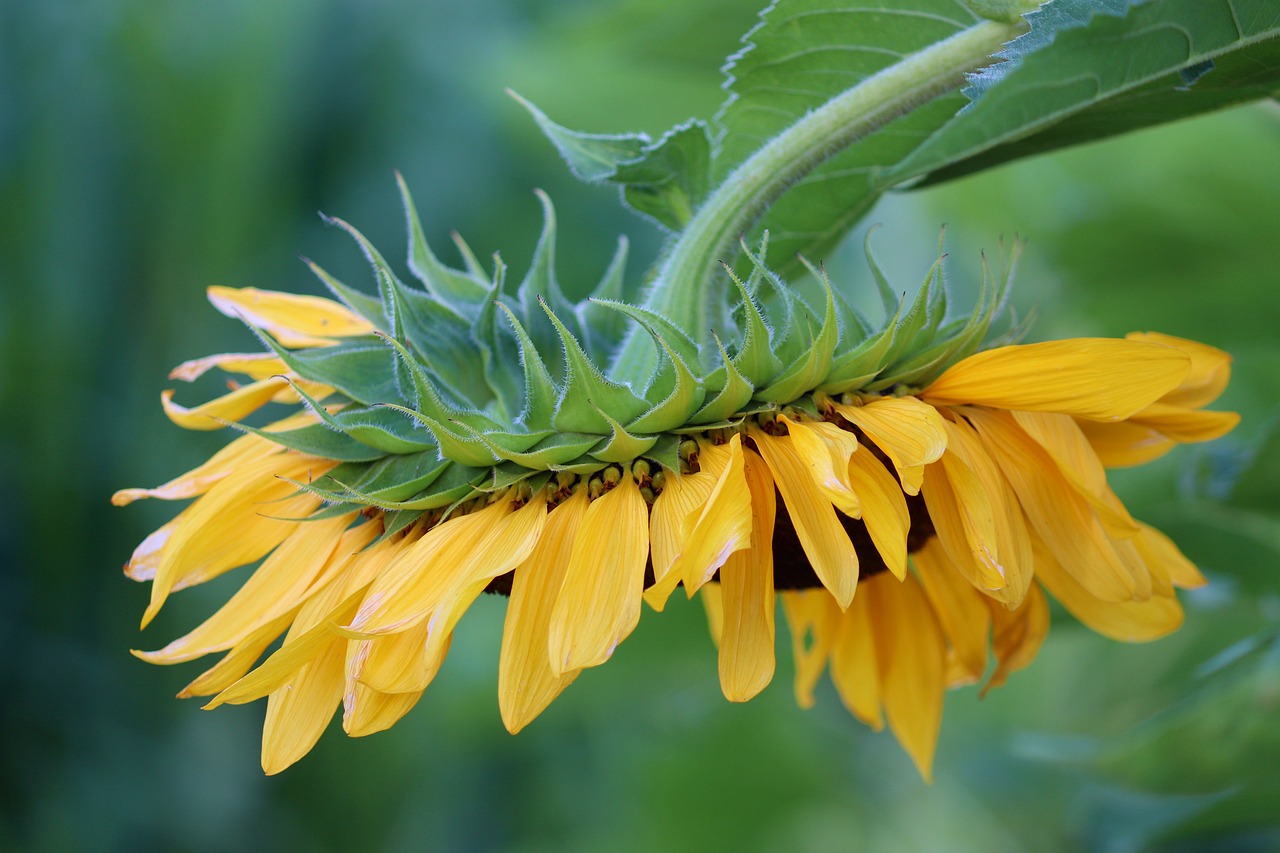
Choosing the Right Plants
When it comes to creating a stunning outdoor space with hanging plants, is absolutely essential. You wouldn't want to hang a delicate flower in a spot where the sun blazes down all day, right? So, let’s dive into the factors that can make or break your hanging garden.
First and foremost, consider the amount of sunlight your chosen location receives. Different plants have varying light requirements; some thrive in full sun, while others prefer partial shade. For instance, if you're looking for vibrant blooms, petunias and geraniums are fantastic choices for sunny spots. On the other hand, if your hanging plants will be in a shadier area, consider ferns or pothos, which can flourish with less light.
Another crucial factor is your climate. Are you in a tropical zone where the weather is warm year-round, or do you experience harsh winters? Understanding your local climate will help you select plants that can withstand the elements. For example, if you live in a cooler region, opt for hardy plants like ivy or succulents that can tolerate lower temperatures.
Maintenance is also key. Some plants require more care than others, so be honest with yourself about how much time you can dedicate to your hanging garden. If you're a busy bee, go for low-maintenance plants like spider plants or fuchsia, which are not only beautiful but also forgiving if you forget to water them occasionally.
To make your decision easier, here’s a quick overview of some popular hanging plants based on sunlight and maintenance:
| Plant | Sunlight Requirement | Maintenance Level |
|---|---|---|
| Petunia | Full Sun | Moderate |
| Pothos | Low to Medium Light | Low |
| Fuchsia | Partial Shade | Moderate |
| Spider Plant | Low to Bright Indirect Light | Low |
| Ivy | Partial Shade | Moderate |
In summary, the right plants can elevate your outdoor decor while ensuring a thriving garden. By considering factors like sunlight, climate, and maintenance, you can create a hanging garden that not only looks stunning but also flourishes throughout the seasons.
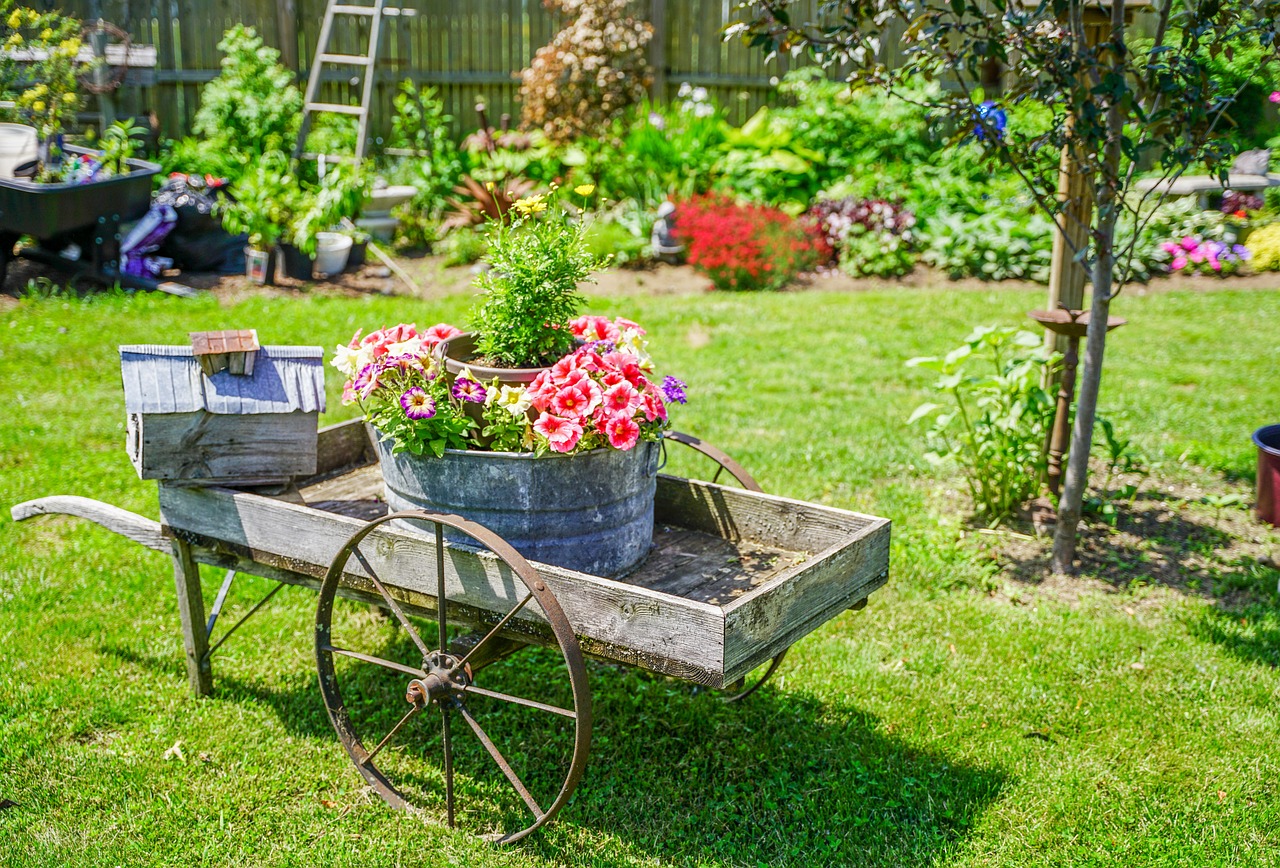
Creative Planter Ideas
When it comes to enhancing the beauty of your outdoor space, creativity knows no bounds! Transforming ordinary containers into stunning hanging planters is not just a fun DIY project; it’s a fantastic way to showcase your personality and style in your garden. By using various materials and designs, you can elevate the visual appeal of your space while adding a unique touch that reflects your taste.
Imagine walking into your garden and being greeted by an array of vibrant colors and textures hanging gracefully from above. This is the magic of hanging planters! You can use anything from traditional pots to unexpected items like old shoes or teacups. The key is to think outside the box and let your imagination run wild. Not only do these creative planters serve a practical purpose, but they also become conversation starters for your guests.
One popular approach is to repurpose items you already have at home. For instance, old mason jars can be transformed into charming hanging planters. Just attach them to a wooden board with sturdy hooks, fill them with soil, and plant your favorite herbs or flowers. This not only saves money but also contributes to a sustainable lifestyle by reducing waste. Similarly, hanging baskets made from woven materials can add a rustic charm to your garden, especially when filled with cascading vines or colorful blooms.
Another innovative idea involves using metal buckets. These can be painted in vibrant colors to match your garden’s theme and hung from hooks or brackets. The metallic finish reflects sunlight beautifully, creating a shimmering effect that can brighten up any area. Additionally, consider the use of hollow logs or tree stumps as natural planters. They bring an organic feel to your space and blend seamlessly with the surrounding nature.
For those who love a touch of elegance, ceramic pots can be adorned with decorative chains or ropes for hanging. The smooth finish and variety of colors available make them perfect for creating a sophisticated look. You can even create a cascading effect by using pots of varying sizes and hanging them at different heights. This not only adds depth to your garden but also creates a stunning visual impact.
To give you a clearer idea of what materials can be used for your hanging planters, here’s a quick comparison:
| Material | Benefits | Best Plants |
|---|---|---|
| Recycled Bottles | Eco-friendly, lightweight | Succulents, herbs |
| Wooden Crates | Rustic charm, sturdy | Ferns, trailing vines |
| Ceramic Pots | Elegant, variety of designs | Flowering plants, small shrubs |
| Metal Buckets | Durable, colorful | Petunias, ivy |
As you embark on your DIY hanging planter journey, remember that the possibilities are endless! The blend of creativity and functionality can turn your garden into a vibrant oasis. So, gather your materials, unleash your creativity, and let your outdoor space flourish with life and color!
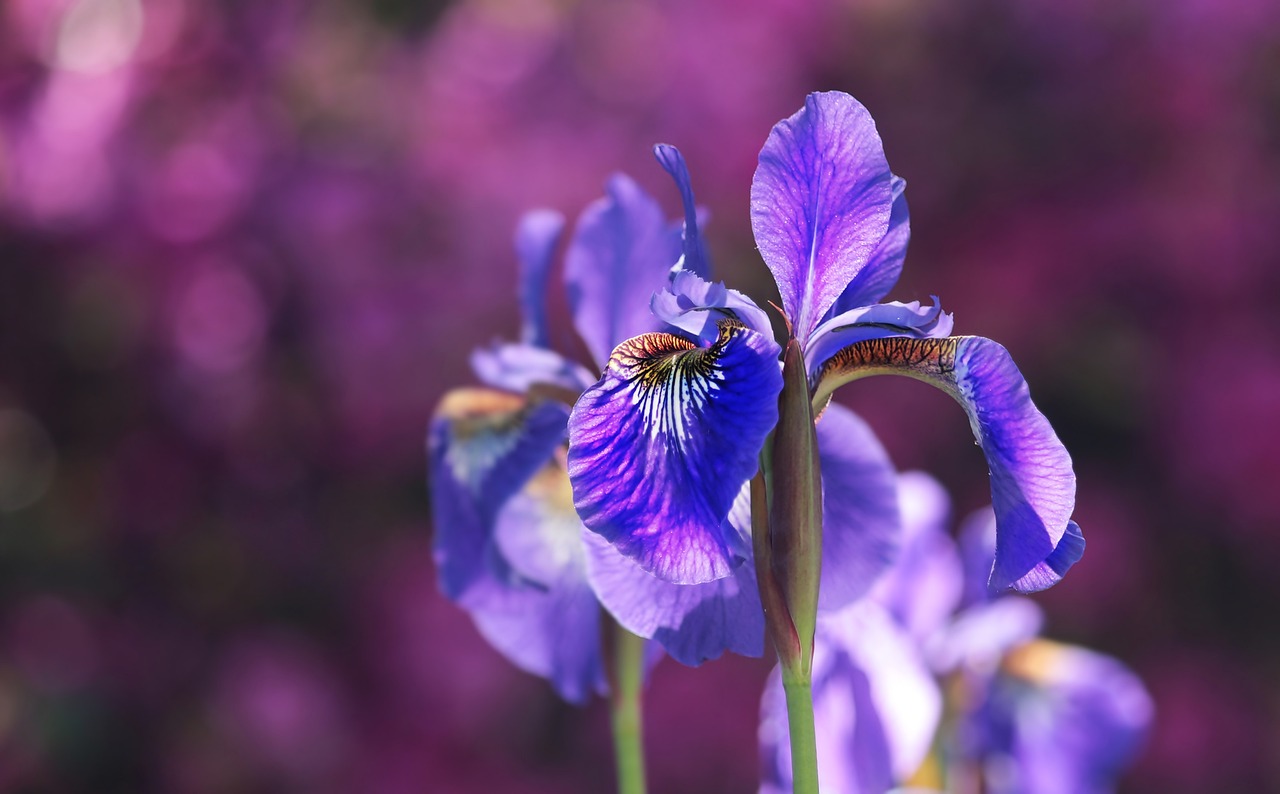
Recycled Materials
Utilizing for your hanging planters is not just a creative choice; it's also an eco-friendly way to beautify your garden. Imagine walking through your outdoor space and spotting vibrant plants cascading from unexpected items that once served a different purpose. This approach not only reduces waste but also adds a unique character to your garden that store-bought planters simply can't match. So, what can you repurpose into stunning hanging displays? Here are some ideas to inspire your next DIY project.
First off, consider using plastic bottles. These versatile containers can be easily transformed into hanging planters with just a few simple cuts. You can create multiple planters from a single bottle, making it a budget-friendly option. Just cut the bottle in half, fill the bottom half with soil, and hang it using sturdy twine or wire. The top half can be inverted to create a protective cover for your plants, keeping them safe from harsh weather.
Another fantastic option is old tin cans. With a little bit of paint and creativity, these cans can be turned into charming hanging planters. Simply punch a couple of holes in the bottom for drainage, paint them in your favorite colors, and hang them using jute rope or chain. Imagine a row of colorful cans filled with trailing vines or bright flowers, adding a pop of color to your outdoor space!
Don't overlook old furniture either! Think about repurposing an old chair or a ladder. An old chair can be transformed into a unique planter by removing the seat and filling the frame with soil and plants. An old ladder can be leaned against a wall and used to hold a variety of hanging planters at different heights, creating an eye-catching vertical garden.
Here’s a quick summary of some recycled materials you can use:
- Plastic bottles
- Tin cans
- Old furniture (chairs, ladders)
- Wooden pallets
- Old tires
Using recycled materials not only helps the environment but also allows you to express your creativity. So, gather those unused items around your home and start crafting! You'll be amazed at how a little imagination can transform trash into treasure, giving your garden a distinctive flair that reflects your personal style.
Q: What types of plants are best for hanging planters made from recycled materials?
A: It's best to choose plants that thrive in smaller containers and can tolerate the conditions of your outdoor space. Consider trailing plants like string of pearls, ivy, or petunias for a beautiful cascading effect.
Q: How do I ensure proper drainage in my recycled planters?
A: Always make sure to create drainage holes in the bottom of your recycled containers, whether they are bottles, cans, or furniture pieces. This will prevent water from pooling and causing root rot.
Q: Can I use any type of paint on recycled planters?
A: It's best to use non-toxic, outdoor-safe paint to ensure the safety of your plants and the longevity of your decorations. Look for paints specifically designed for outdoor use.
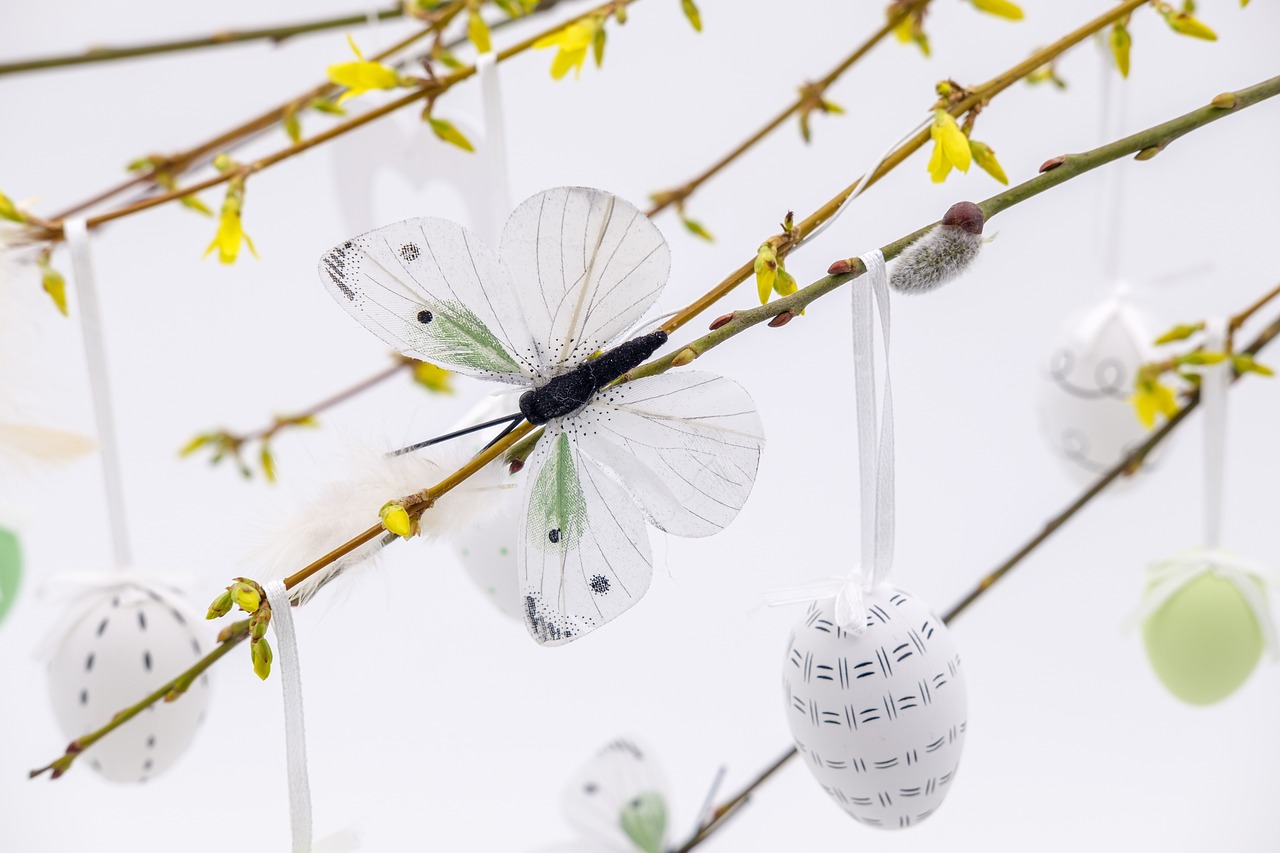
Upcycled Wooden Crates
Upcycling wooden crates is not just a trend; it's a fantastic way to add a rustic charm to your garden while being environmentally conscious. These crates, often discarded or left unused in garages, can be transformed into stunning hanging planters that not only serve a practical purpose but also enhance the visual appeal of your outdoor space. Imagine walking into your garden and being greeted by the sight of vibrant flowers or lush greenery cascading down from beautifully crafted wooden crates. It's like nature's artwork hanging in mid-air!
To get started with your upcycled wooden crate project, you'll first need to gather some crates. You can often find these at local farmers' markets, thrift stores, or even online marketplaces. Once you've secured your crates, it's time to give them a little love. A quick wash and a light sanding can remove any rough edges and dirt, preparing them for their new role as planters.
Next, you'll want to consider the design and how you plan to hang them. You can either hang them directly from sturdy hooks or create a more elaborate display by stacking them in a staggered fashion. This not only maximizes space but also adds an artistic element to your garden. If you're opting for the hanging method, ensure the crates are securely fastened to prevent any accidents.
When it comes to planting, the options are endless! You can fill your crates with a variety of plants, such as:
- Herbs - Perfect for a kitchen garden!
- Succulents - Low maintenance and visually stunning.
- Flowers - A splash of color can brighten any space.
Don't forget to drill drainage holes in the bottom of the crates to keep your plants healthy. Without proper drainage, the roots can become waterlogged, leading to decay. Additionally, you might want to line the inside of the crates with landscape fabric to help retain soil while allowing excess water to escape.
Finally, remember that the beauty of upcycled wooden crates lies in their imperfections. Embrace the natural wear and tear, as it adds character and tells a story. Whether you choose to paint them in vibrant colors or leave them in their natural state, your hanging planters will surely become a focal point in your garden.
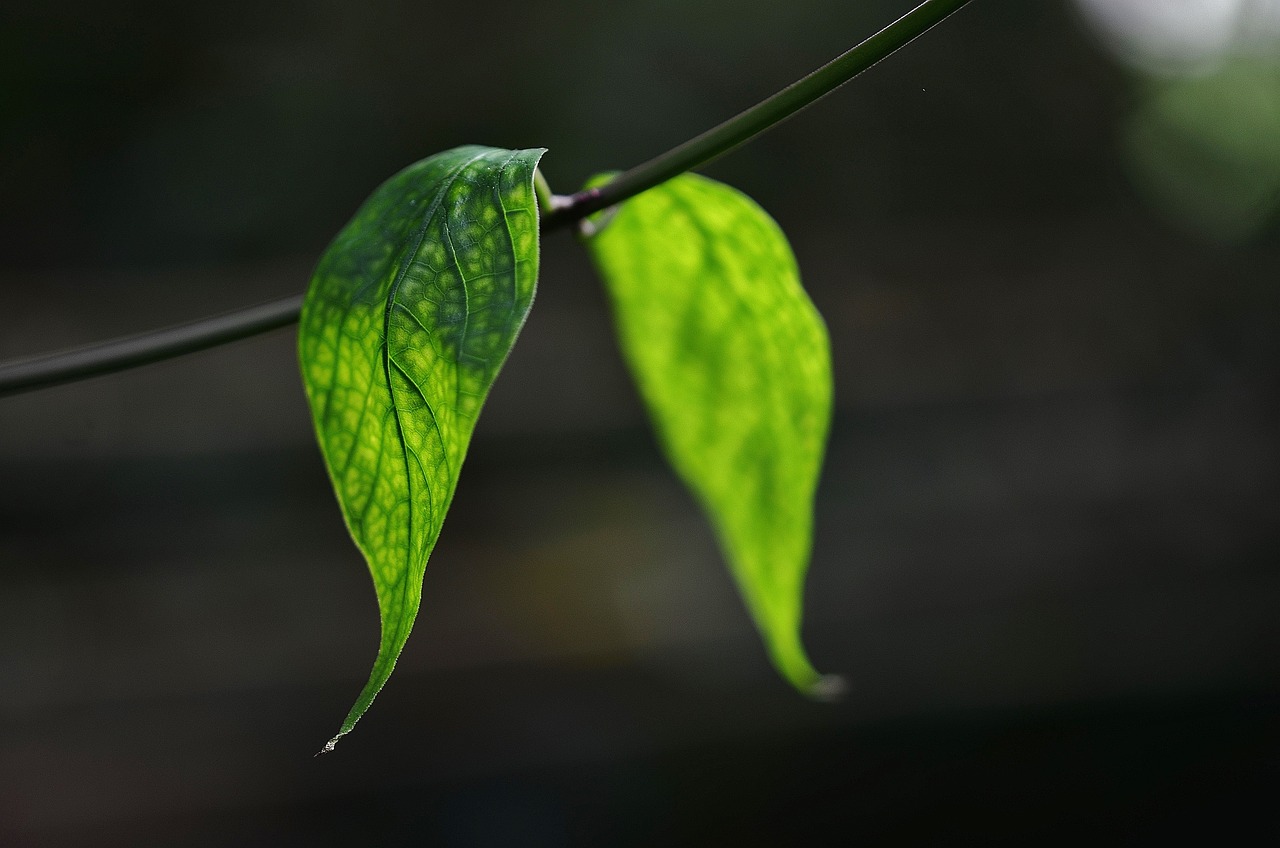
Macramé Plant Hangers
When it comes to adding a touch of bohemian charm to your outdoor space, are a fantastic choice! These artistic creations not only hold your plants but also serve as a beautiful piece of decor. Imagine walking into your garden and being greeted by lush greenery suspended from the ceiling, swaying gently in the breeze. It’s like nature’s own art installation! But how do you create these stunning hangers? Don't worry; it's easier than you think!
First things first, you’ll need some supplies. Here’s a quick rundown of what you’ll need to get started:
- Macramé cord: Look for a durable cotton or jute cord. The thickness can vary based on your style preference.
- Scissors: A sharp pair will make cutting the cord a breeze.
- Measuring tape: To ensure your hangers are the right length.
- Plant pots: Choose pots that suit your style and the plants you want to display.
Now, let’s talk about the knotting techniques. Macramé is all about knots, and there are a few basic ones that you’ll use frequently:
- Square Knot: This is the most fundamental knot in macramé and is used for joining cords together.
- Half Hitch Knot: This knot creates a beautiful spiral effect and is essential for shaping your hanger.
- Lark's Head Knot: Perfect for attaching your cord to the plant pot.
Once you’ve got your materials and mastered a few knots, the fun begins! You can customize your hangers in various ways:
- Length: Adjust the length of your cords to create a cascading effect or a more structured look.
- Design: Experiment with different knot patterns to create unique designs that reflect your personality.
- Color: Consider dyeing the cord or using colored cords to match your garden’s theme.
After crafting your macramé hangers, hang them in a location that receives adequate sunlight for your plants. Whether you choose to suspend them from a tree branch, a porch ceiling, or a decorative hook, the result will be a stunning display that draws the eye and enhances your garden’s vibe.
Incorporating macramé plant hangers into your outdoor decor not only elevates the aesthetic but also creates a cozy and inviting atmosphere. Plus, it’s a fun project that can be enjoyed alone or with friends and family. So why not roll up your sleeves and get knotting? Your plants (and your garden) will thank you!
Q: Do I need to be an expert to make macramé plant hangers?
A: Not at all! Macramé is a craft that anyone can learn. Start with simple knots and gradually try more complex patterns as you gain confidence.
Q: What types of plants work well in macramé hangers?
A: Almost any plant can be used! However, trailing plants like pothos, ferns, or spider plants look particularly stunning in hangers.
Q: Can I use synthetic cords instead of natural ones?
A: Yes, synthetic cords can be used, but natural fibers tend to have a more organic look and feel, which is often desired in outdoor settings.
Q: How do I care for my plants in macramé hangers?
A: Ensure that your plants are getting the right amount of light and water. It’s also essential to check that the hangers are securely fastened and that your plants are not getting too heavy for the cords!
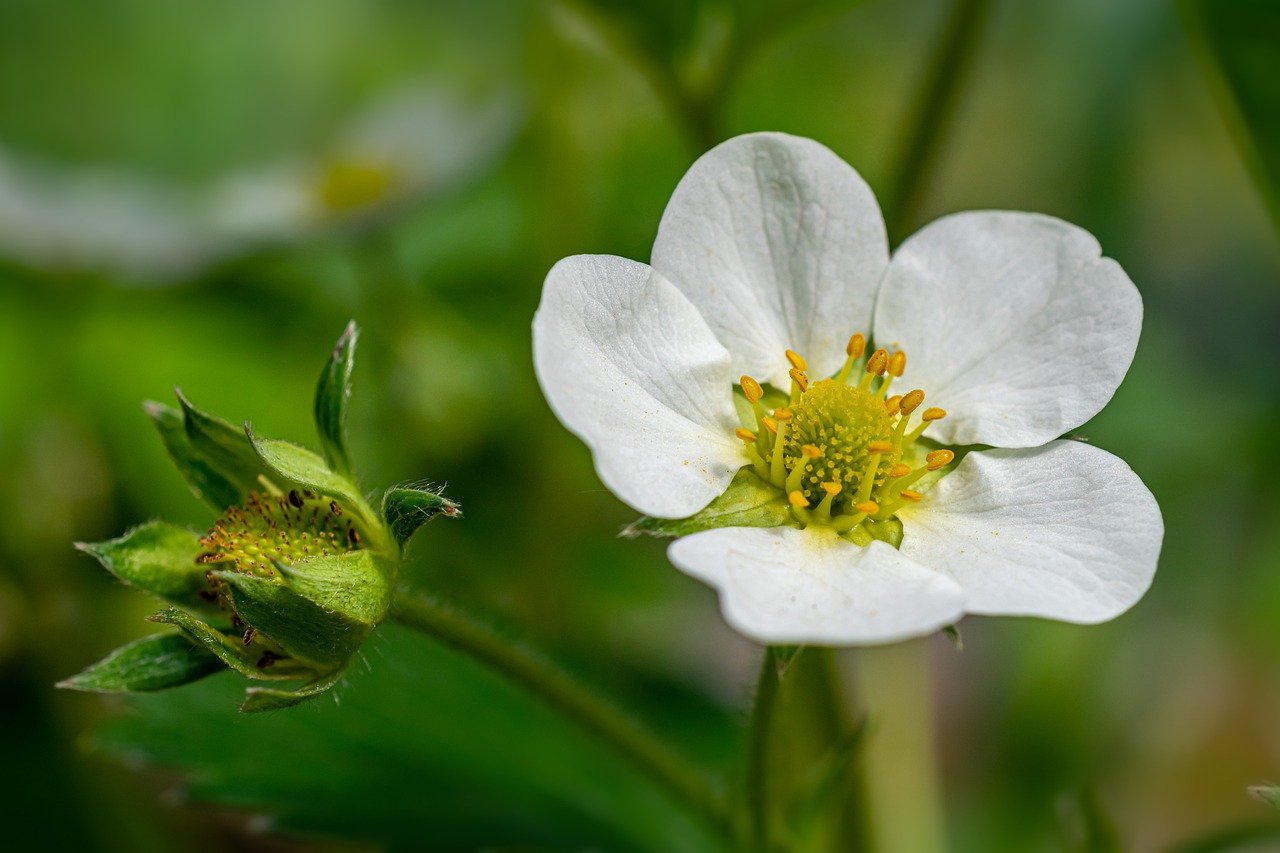
Choosing the Right Location
When it comes to hanging plants, one of the most vital factors to consider is their location. Just like us, plants have their preferences for where they want to grow. Imagine placing a sun-loving flower in the shade of a tree—it just wouldn’t thrive! Therefore, understanding the specific needs of your plants is crucial for creating a vibrant hanging garden.
First and foremost, assess the amount of sunlight your outdoor space receives throughout the day. Different plants have varying light requirements, and placing them in the wrong spot can lead to stunted growth or even death. For instance, succulents and herbs generally enjoy full sun, while ferns and some tropical plants prefer partial shade. It's a bit like choosing the right seat at a concert; you want to be in the zone that makes you feel alive!
Next, consider the climate of your area. If you live in a region with harsh winters or scorching summers, you’ll want to place your hanging plants where they can get some protection from extreme weather. For example, hanging them under a porch or awning can shield them from heavy rain or strong winds. Think of it as giving your plants a cozy umbrella on a rainy day!
Moreover, the height at which you hang your plants plays a significant role in their well-being. Hanging them too high can make it difficult to water and maintain them, while placing them too low may expose them to pests or foot traffic. Ideally, aim for a height that allows easy access for watering and pruning. A good rule of thumb is to hang them at eye level; after all, you want to admire your hard work, right?
Lastly, don’t forget about the visual appeal of your hanging plants. Think about how they will complement your outdoor decor. You might want to create a cascading effect by hanging plants of different lengths or colors. This not only adds depth to your garden but also creates an inviting atmosphere. Picture a beautiful tapestry of greens and blooms swaying gently in the breeze—now that’s a sight to behold!
In summary, choosing the right location for your hanging plants involves a mix of understanding their light and climate needs, considering maintenance accessibility, and enhancing your garden's aesthetic appeal. By taking these factors into account, you’ll be well on your way to creating a thriving outdoor sanctuary filled with lush greenery that not only beautifies your space but also brings a sense of tranquility.
- How much sunlight do hanging plants need? - It varies by plant type; some thrive in full sun while others prefer partial shade.
- Can I hang plants indoors? - Absolutely! Many plants do well indoors as long as they receive adequate light.
- What is the best way to water hanging plants? - Water them thoroughly but ensure proper drainage to avoid root rot.
- How often should I fertilize my hanging plants? - Typically every 4-6 weeks during the growing season, but check specific plant needs.
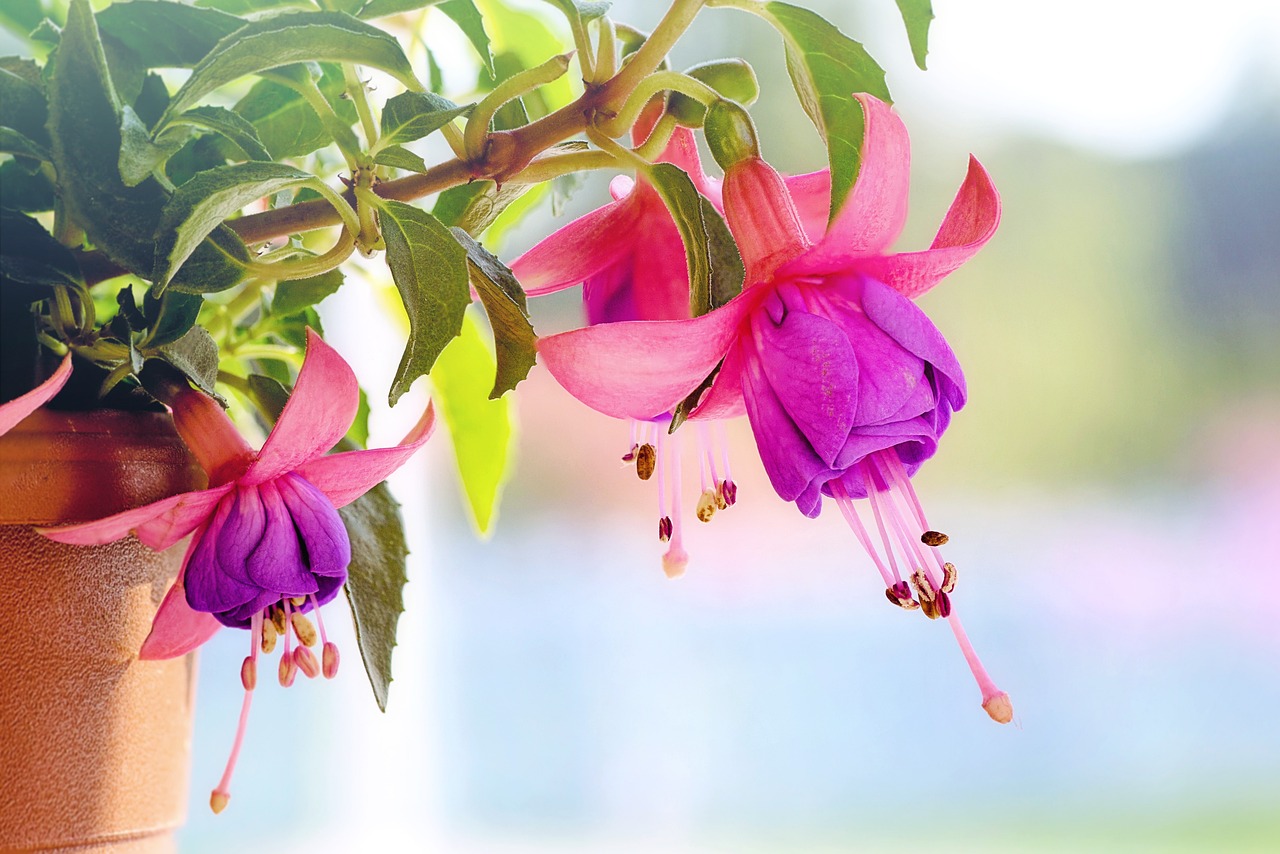
Maintenance Tips
When it comes to keeping your hanging plants looking vibrant and healthy, regular maintenance is key. Think of it like nurturing a friendship; the more effort you put in, the stronger it becomes! First and foremost, watering is a critical aspect of plant care. Hanging plants often dry out faster than those rooted in the ground due to increased exposure to air circulation. Therefore, it’s essential to check the moisture level of the soil regularly. You can do this by sticking your finger about an inch deep into the soil; if it feels dry, it’s time for a drink!
Now, let’s talk about fertilizing. Just like we need our vitamins, plants require nutrients to thrive. During the growing season, which typically spans from spring to early autumn, applying a balanced liquid fertilizer every 4-6 weeks can make a world of difference. You can use a diluted solution to avoid overwhelming your plants. Remember, less is often more when it comes to fertilizer!
Another important aspect of maintenance is pruning. Regularly trimming dead or yellowing leaves not only improves the appearance of your hanging plants but also encourages new growth. Think of it as giving your plants a fresh haircut! When pruning, use clean, sharp scissors to prevent any potential diseases from spreading. Aim to prune during the growing season for the best results.
Here’s a quick table summarizing the essential maintenance tasks for your hanging plants:
| Task | Frequency | Notes |
|---|---|---|
| Watering | Every few days | Check soil moisture regularly |
| Fertilizing | Every 4-6 weeks | Use a diluted solution |
| Pruning | As needed | Remove dead or yellowing leaves |
Lastly, let’s not forget about pest control. Keeping an eye out for pests is crucial to maintaining the health of your hanging plants. Common pests like aphids, spider mites, and whiteflies can wreak havoc if left unchecked. A gentle spray of insecticidal soap or a mixture of water and dish soap can help keep these nuisances at bay. Additionally, introducing beneficial insects like ladybugs can naturally control pest populations.
By following these maintenance tips, you can ensure that your hanging plants not only survive but thrive, adding beauty and life to your outdoor space. Remember, a little love and attention go a long way in the world of gardening!
- How often should I water my hanging plants?
It depends on the plant type and weather conditions, but generally, check the soil moisture every few days. - Can I use regular potting soil for my hanging plants?
Yes, regular potting soil works well, but consider adding perlite for better drainage. - What are the best plants for hanging baskets?
Some popular choices include petunias, ferns, and trailing vines like ivy or pothos. - How do I prevent my hanging plants from drying out?
Ensure they are watered regularly and consider using self-watering planters for added moisture retention.
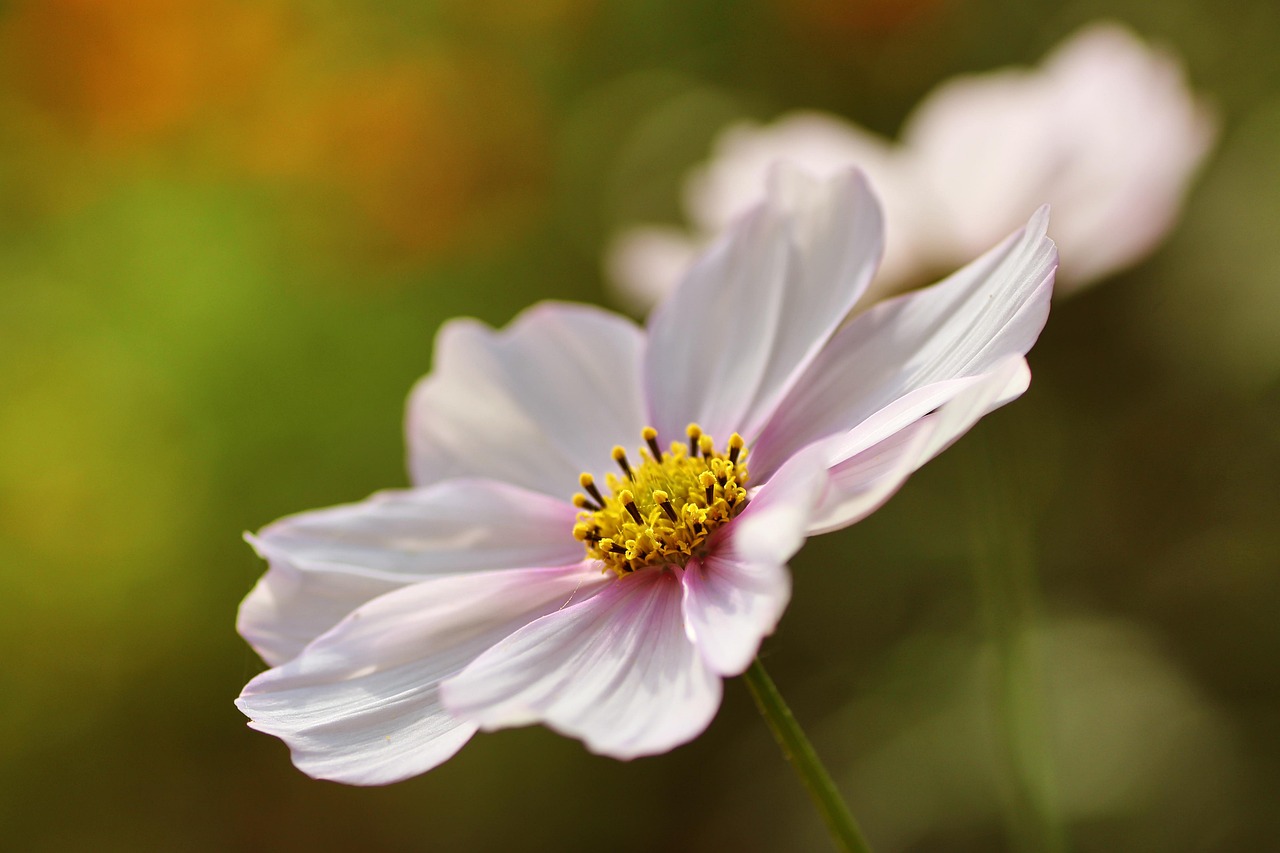
Watering Techniques
When it comes to nurturing your hanging plants, effective are absolutely essential. Think of watering as the lifeblood of your plants; just like we need water to survive, so do they! However, the challenge lies in finding that perfect balance. Too much water can lead to root rot, while too little can leave your plants parched and wilted. So, how do we strike that balance? Here are some strategies to ensure your hanging plants get the hydration they need.
First and foremost, consider the type of plants you are using. Different plants have varying water needs. For instance, succulents and cacti thrive in dry conditions and require minimal watering, while ferns and tropical plants enjoy a more humid environment and need frequent moisture. Understanding these needs is the first step in crafting an effective watering routine.
One popular method is the soak and dry technique. This involves thoroughly soaking the soil until water drains from the bottom of the planter, then allowing the soil to dry out completely before watering again. This method encourages deep root growth, which is vital for the health of your hanging plants. It's like giving your plants a refreshing drink followed by a cozy nap!
Another effective approach is to use a self-watering system. These systems can be a game changer, especially for busy gardeners. They typically involve a reservoir that allows the plants to absorb water as needed. This ensures that your plants receive a consistent moisture level without the risk of overwatering. If you’re someone who tends to forget when the last time you watered was, this might be the perfect solution for you!
Moreover, consider the time of day you water your plants. Early mornings or late afternoons are ideal for watering, as temperatures are cooler, and evaporation rates are lower. This gives the plants ample time to absorb the moisture before the heat of the day kicks in. Think of it as serving breakfast in bed—your plants will be grateful for the early start!
Lastly, always keep an eye on the weather. If you’re expecting rain, you might want to skip watering for the day, but if there’s a dry spell, your plants may need extra attention. It’s all about being attuned to their needs, much like a parent caring for a child. Understanding the signs your plants give you—such as drooping leaves or dry soil—is crucial in determining when and how much to water.
In summary, mastering the art of watering your hanging plants involves a combination of understanding their specific needs, employing effective techniques, and being mindful of environmental factors. With a little practice and observation, you’ll soon find yourself with a flourishing display of greenery that not only beautifies your space but also brings joy to your gardening journey!
- How often should I water my hanging plants? It depends on the type of plants you have and the environmental conditions. Generally, check the soil moisture; if it's dry an inch down, it's time to water.
- Can I use tap water for my hanging plants? Yes, but let it sit for 24 hours to allow chlorine to dissipate. Rainwater is also an excellent alternative!
- What should I do if my plants are wilting? Check the soil moisture first. If it's dry, water them thoroughly. If the soil is wet, they might be overwatered, so let them dry out before watering again.
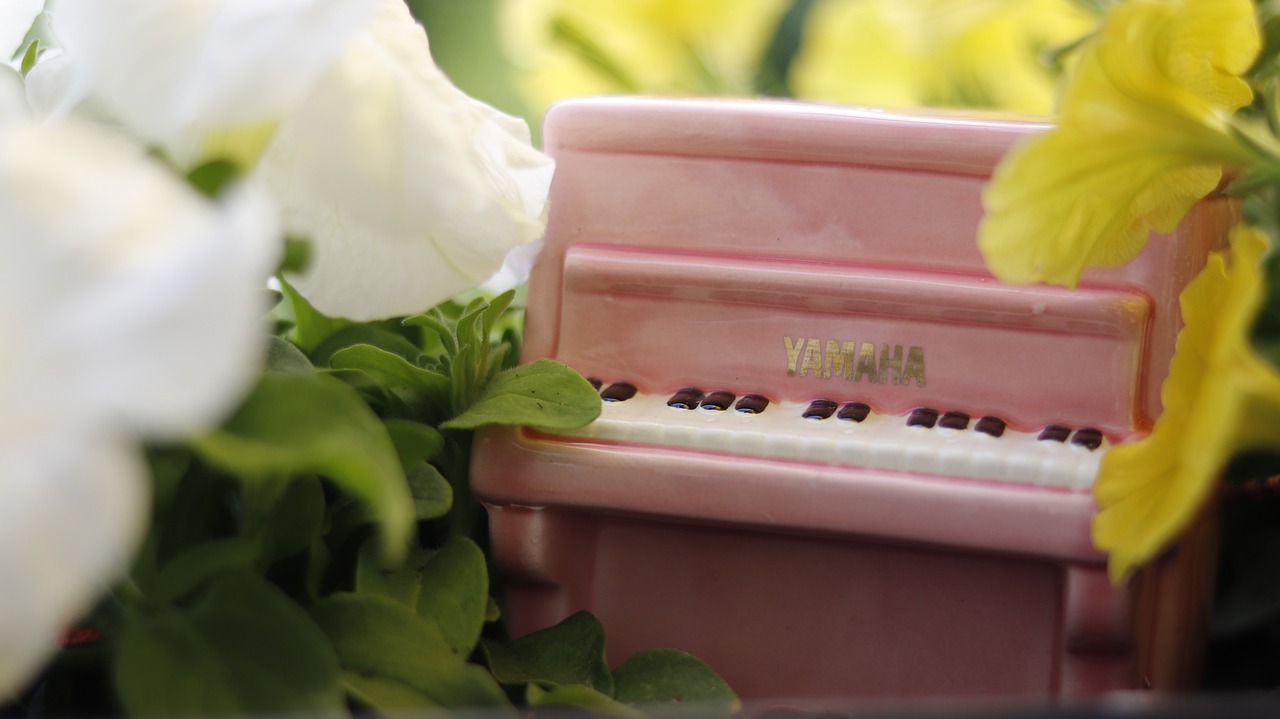
Pest Control Strategies
When it comes to keeping your hanging plants healthy and thriving, pest control is a vital aspect that you simply can't overlook. Imagine investing time and effort into creating a stunning outdoor display, only to have it ravaged by pesky insects. It's a gardener's nightmare! So, how do you protect your green beauties without turning your garden into a chemical wasteland? Let's dive into some effective pest control strategies that will keep your plants flourishing.
First and foremost, understanding the common pests that can invade your hanging plants is essential. These little critters can range from aphids and spider mites to whiteflies and mealybugs. Each of these pests has its own unique way of wreaking havoc, so being able to identify them is half the battle. Regularly inspecting your plants is a proactive approach. Look for signs of infestation, such as discolored leaves, sticky residue, or even the pests themselves.
Once you've spotted an unwelcome guest, there are several strategies you can adopt to combat the problem. Here are some effective methods:
- Natural Remedies: Before reaching for chemical pesticides, consider natural solutions. Neem oil, for example, is a fantastic organic option that disrupts the life cycle of many pests without harming beneficial insects. Simply mix it with water and spray it on the affected areas.
- Insecticidal Soap: This is another great alternative for dealing with soft-bodied insects like aphids. It works by suffocating the pests and is safe for most plants. Just ensure you test it on a small area first.
- Companion Planting: Did you know that some plants can naturally repel pests? Incorporating companion plants like marigolds or basil near your hanging plants can deter unwanted insects. It's like having a natural bodyguard for your greenery!
However, if you find that the infestation is more severe, you might consider using chemical pesticides as a last resort. If you go down this route, always follow the manufacturer's instructions carefully, and try to choose products that are less harmful to the environment. Remember, the goal is to maintain a healthy garden ecosystem.
Another essential aspect of pest control is prevention. Keeping your plants healthy through proper watering, fertilization, and pruning can make them less susceptible to pests. A strong, well-cared-for plant is like a fortress against invaders. Additionally, maintaining cleanliness in your garden by removing debris and dead leaves can help reduce pest habitats.
Lastly, don’t forget about the power of beneficial insects! Ladybugs, lacewings, and predatory wasps are nature's pest control agents. You can attract these allies by planting flowers that provide nectar and pollen. It’s a win-win situation; you enhance your garden's beauty while keeping pests at bay.
In conclusion, effective pest control for your hanging plants doesn’t have to be complicated or harmful to the environment. By combining natural remedies, preventive measures, and a little help from nature, you can create a thriving outdoor space that is free from pests. So, roll up your sleeves, get out there, and give your plants the protection they deserve!
Q: What are the signs of pest infestation in hanging plants?
A: Look for discolored leaves, sticky residue, webbing, or visible insects on the plants.
Q: Can I use household items for pest control?
A: Yes! Items like soap and vinegar can be effective against certain pests when used properly.
Q: How can I attract beneficial insects to my garden?
A: Planting a variety of flowers that provide nectar and pollen can help attract beneficial insects.
Q: Is it safe to use chemical pesticides on hanging plants?
A: While chemical pesticides can be effective, it's important to use them as a last resort and follow all safety guidelines to protect your plants and the environment.
Frequently Asked Questions
- What types of plants are best for hanging displays?
When choosing plants for hanging displays, consider options like ferns, petunias, and succulents. These plants not only thrive in hanging arrangements but also add a splash of color and texture to your garden. Just remember to check their sunlight and water needs!
- How can I create a hanging planter using recycled materials?
Recycling materials for hanging planters is both fun and eco-friendly! You can use items like plastic bottles, old cans, or even wooden pallets. Just cut, paint, or decorate them as you like, and use sturdy rope or chains to hang them securely.
- What is the best location for my hanging plants?
The ideal location for hanging plants is somewhere that receives indirect sunlight and is protected from strong winds. Look for spots under eaves or porches where they can enjoy filtered light while staying sheltered from harsh weather.
- How often should I water my hanging plants?
Watering frequency depends on the type of plants you choose and the climate. Generally, check the soil moisture about once a week. If the top inch feels dry, it’s time to water! Just be careful not to overwater, which can lead to root rot.
- What are some effective pest control methods for hanging plants?
To keep pests at bay, consider using natural remedies like neem oil or insecticidal soap. You can also introduce beneficial insects like ladybugs that feast on pests. Regularly inspecting your plants can help catch any problems early!
- Can I use macramé hangers for heavy plants?
Absolutely! Just ensure that your macramé hangers are made from strong materials like cotton or jute and are securely tied. For larger plants, consider using multiple strands to distribute the weight evenly.



















